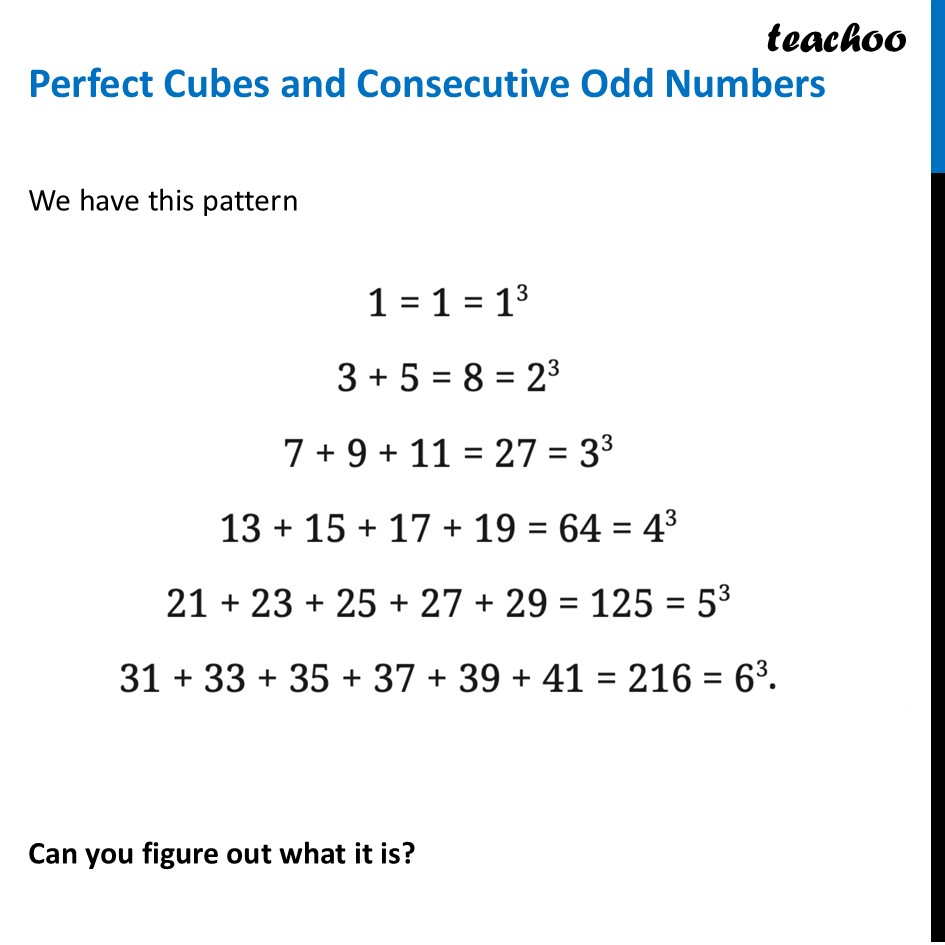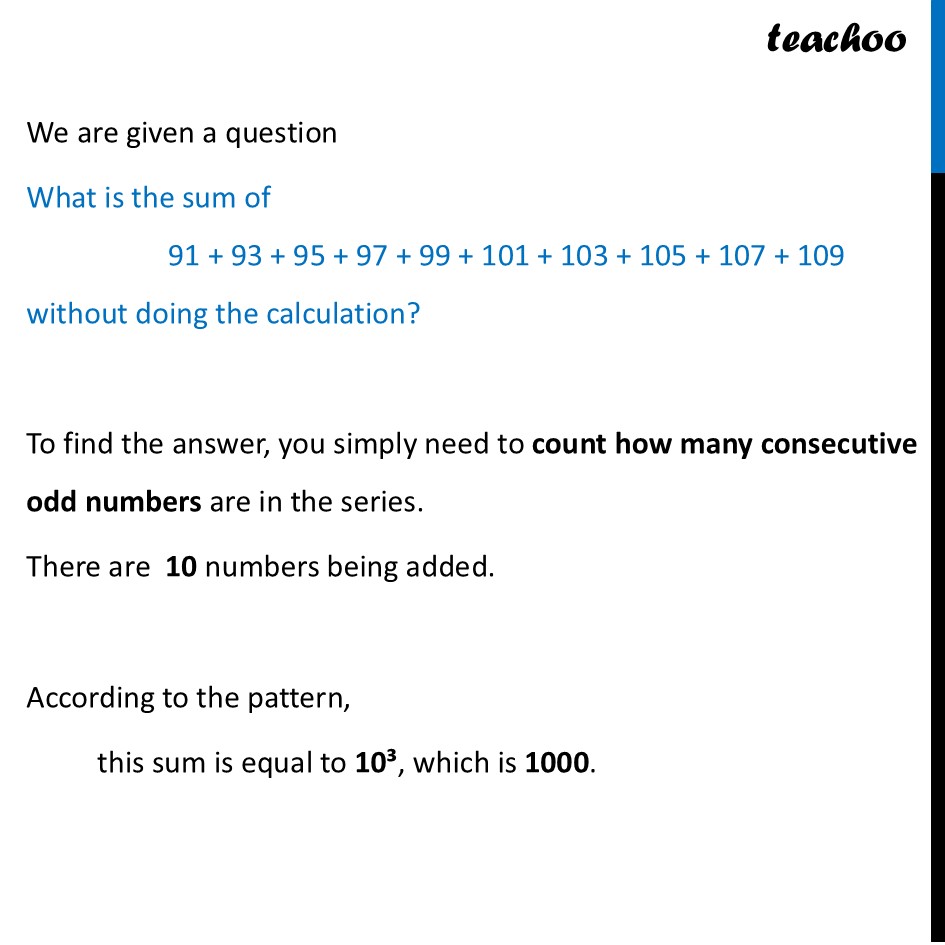


Perfect Cubes - and its Patterns
Perfect Cubes - and its Patterns
Last updated at July 30, 2025 by Teachoo



Transcript
Perfect Cubes and Consecutive Odd Numbers We have this pattern Can you figure out what it is? The text shows that for any whole number n, the value of n³ is equal to the sum of n consecutive odd numbers. 13 is the sum of 1 odd number: 1 = 13 23 is the sum of next 2 consecutive odd numbers: 3 + 5 = 8 = 23 33 is the sum of next 3 consecutive odd numbers: 7 + 9 + 11 = 27 = 33 43 is the sum of next 4 consecutive odd numbers: 13 + 15 + 17 + 19 = 64 = 43 We are given a question What is the sum of 91 + 93 + 95 + 97 + 99 + 101 + 103 + 105 + 107 + 109 without doing the calculation? To find the answer, you simply need to count how many consecutive odd numbers are in the series. There are 10 numbers being added. According to the pattern, this sum is equal to 10³, which is 1000.